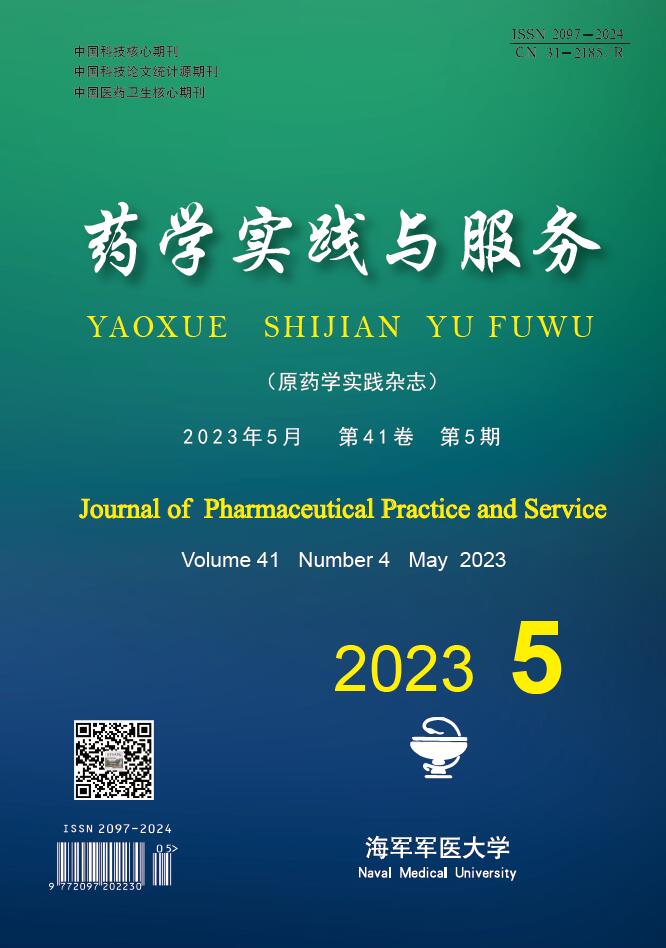-
外泌体(exosome)是细胞产生的胞外囊泡的一种,在20世纪80年代末首次被描述[1-2]。外泌体作为一种细胞间近距离通讯的特殊介质,在包括免疫反应、抗原递呈和信号转导[3]等各种生理过程中发挥着重要作用。几乎所有真核细胞都可以分泌外泌体,包括脂肪细胞、上皮细胞、成纤维细胞、神经元、星形胶质细胞等,外泌体几乎存在于所有体液如脑脊液、尿液、精子、唾液、血液、玻璃体和乳汁等[4],含有丰富的核酸、蛋白、脂质和代谢物等。外泌体所携带的物质由于源细胞的类型及其所处状态(例如转化、分化、刺激和压力)不同而存在很大差异,由其大小、内容物含量、对受体细胞的功能影响以及细胞来源来概念化,因此是一个高度异质性的群体,具有独特的诱导生物学反应的能力,也为一些疾病如代谢性疾病、心血管疾病、神经退行性疾病、肿瘤等提供诊断和预后信息[5]。此外,作为一种纳米粒径的内源性囊泡,高生物相容性、天然的归巢性能、以及进行功能化修饰后实现更特异性的组织器官和病灶部位的富集,都使得外泌体作为一种新型药物递送载体具有很好的研究价值。本文就外泌体的提取分离方法,在疾病中的诊疗作用以及工程化修饰后用于药物递送做一综述。
-
外泌体的发生机制主要涉及质膜的双重内陷。质膜的第一次内陷形成早期分选内含体(ESEs),此时ESEs膜内表面上附着细胞表面蛋白和细胞外环境相关的可溶性蛋白,有时新形成的ESEs可直接与预先存在的ESEs合并。ESEs在高尔基体和内质网的帮助下形成晚期分选内含体(LSEs)并再次内陷形成多泡体(MVBs),MVBs包含数个腔内小泡(ILVs)。MVBs可以与溶酶体或自噬体融合以被降解,也可以与质膜融合以释放包含的ILVs,ILVs释放后即形成直径约40~160 nm的外泌体[6-7]。
目前常用的外泌体分离方法有超速离心法、密度梯度离心法、超滤法、色谱法、免疫亲和法、聚合物沉淀法等,分别采用不同的分离机制,所得到的外泌体具有不同的得率和纯度,其主要原理和优缺点见表1。
方法 原理 优势 耗时 纯度 产率 不足 超速离心法[8] 大小和密度不同的组分具有不同的沉积速度 金标准,适用于大批量样品,技术成熟 >4 h 中 低 仪器昂贵、操作繁琐耗时、产量低,可能会破坏外泌体[9] 密度梯度离心法 大小和密度不同的组分具有不同的沉积速度 高纯度,避免外泌体损伤 >16 h 高 低 前期准备、操作繁琐、耗时[10] 超滤法[11] 不同粒子粒径和相对分子质量的差异 操作简便,不需要特殊设备和试剂 <4 h 高 中 滤膜易堵塞,小粒径外泌体
易丢失[12]色谱法 不同粒子粒径和相对分子质量的差异 简单、经济,能较好保持外泌体生物功能和结构[13] <0.3 h 高 高 需要特殊的柱子和填料,存在脂蛋白污染 免疫亲和法[14] 抗体与外泌体特异性膜蛋白的相互作用 特异性分离外泌体 4~20 h 高 中 昂贵,耗时,分离效果取决于抗体的特异性 聚合物沉淀法[15] 外泌体在高亲水性聚合物影响下溶解度或分散性的变化 操作简单,适用于大体积
样品0.3~12 h 低 高 潜在污染物(提纯蛋白质聚集体或残留聚合物) -
外泌体与免疫和炎症反应相关疾病、心血管疾病、神经系统疾病以及肿瘤等的发生发展有关,递送至受体细胞的蛋白质、代谢物和核酸有效地改变了它们的生物反应,这种外泌体介导的反应可以促进或抑制疾病的进程。作为一种通讯介质,外泌体具有调节复杂细胞内通路的特性。作为一种治疗工具,外泌体避免了如不受控制的细胞分裂、致瘤性以及血管栓塞等与细胞治疗相关的安全问题[16]。除了治疗因素,外泌体具有辅助疾病诊断的特性,它们存在于几乎所有生物体液中,通过对生物体液取样很容易获得并检测其内容物组成,从而对疾病进展做出判断以及确定治疗方法。
-
一些外泌体中的核酸物质可以作为疾病诊断的特异性分子。Niu等[17]发现血清外泌体中的miR-155与肝硬化的进展和肝硬化的临床预后指标密切相关,表明富含miR-155的外泌体可作为肝纤维化诊断和进展的非侵入性生物标志物。在CCl4诱导的肝纤维化小鼠模型中,脂多糖处理的巨噬细胞外泌体高表达miR-500能通过抑制MFN2促进肝星形细胞活化和肝纤维化。因此,血清外泌体的miR-500也可作为肝纤维化的生物标志物[18]。Rong等[19]的研究表明,在SD大鼠肝纤维化模型中,骨髓间充质干细胞外泌体(BMSC-Exo)通过抑制 WNT/β-catenin通路降低了CCl4诱导肝纤维化的能力,能够有效减轻肝纤维化,包括减少胶原蛋白积聚,增强肝功能,抑制炎症和增加肝细胞再生。类似地,Damania等[20]的研究发现,在HepG2细胞的2D/3D培养条件的体外肝损伤模型以及由CCl4引起的大鼠急性肝损伤模型中,大鼠BMSC-Exo具有抗凋亡、抗氧化和促细胞存活作用。能明显减少缺血再灌注损伤,可用于临床肝移植或治疗急性肝功能衰竭。
-
源自骨关节炎软骨细胞的外泌体可以通过miR-449a刺激炎症小体活化并增加巨噬细胞中成熟的IL-1β产生,可能加重滑膜炎并加速骨关节炎的进展[21]。BMSC-Exo同时具有免疫调节作用和抗炎作用,Casado等[22]在抗原触发的猪滑膜炎模型中发现,BMSC-Exo处理后,模型动物关节中的白细胞数量没有明显变化,但淋巴细胞显著减少,并伴随着滑液中的炎性细胞因子显著下降,对治疗滑膜炎具有积极意义。Qin等[23]测试了BMSC-Exo在体外调节成骨细胞活性和体内骨再生中的作用,与miR-27a和miR-206处理相比,用miR-196a处理的成骨细胞表现出最好的成骨活性。miR-196a是典型的成骨相关miRNA,在BMSC-Exo中高度富集,证明了BMSC-Exo在调节成骨细胞分化和成骨基因表达中的重要作用。Chen等[24]发现软骨细胞的外泌体可以在皮下环境中诱导软骨祖细胞构建体的有效异位软骨形成,这可能代表了一种用于软骨再生的无细胞治疗方法。
-
动脉粥样硬化是最常见的心血管疾病之一。Hergenreider[25]发现人脐静脉内皮细胞在剪切力刺激下分泌的外泌体富含miR-143/145,其控制共培养平滑肌细胞中靶基因KLF2的表达,从而减少ApoE(-/-)小鼠主动脉粥样硬化的形成。冠状动脉粥样硬化斑块破裂或侵袭后,易产生急性冠状动脉综合征(ACS)。外泌体中的丰富miRNA可以成为诊断和治疗ACS的重要工具[26]。有研究发现ACS患者血清中的外泌体miR-208a水平显著高于健康个体[27]。心肌缺血再灌注损伤是指心肌组织供血中断一段时间后恢复,但心肌组织损伤加重的现象。Lai等[28]在小鼠急性心肌缺血再灌注损伤的心脏模型中发现,间充质干细胞通过减少心肌梗死面积产生心脏保护作用,而其保护作用主要通过旁分泌中的外泌体起效。Zou等[29]以H9C2细胞系建立大鼠心肌缺血再灌注模型用于研究心肌发病过程,BMSC-Exo处理后的缺血再灌注过程中对细胞增殖、迁移以及心肌细胞凋亡的抑制作用,表现为Apaf1(凋亡蛋白酶激活因子1)表达被显著抑制,ATG13(自噬相关蛋白13)表达在体内显著增加,证明BMSC-Exo还可以通过调节自噬机制抑制与心肌梗死相关的心肌损伤。心力衰竭由多种因素带来的心肌收缩功能障碍引起,有研究者在小鼠压力超负荷诱导的心脏肥大模型中发现小鼠BMSC-Exo通过抑制心肌病理性肥大、抑制心肌细胞凋亡和减少心脏纤维化,在抑制心肌重构中产生重要作用,为心力衰竭等疾病提供了全新有效的治疗策略[30]。
-
基于亲代细胞,外泌体可用作神经退行性疾病、脑创伤、卒中等中枢疾病诊断预后的潜在生物标志物,或产生治疗作用。如人脐静脉内皮细胞衍生的外泌体可以通过传递miR-21-3p抑制ATG12信号传导来减弱缺氧/复氧诱导的神经元细胞凋亡[31]。在Wistar大鼠中风模型中,BMSC-Exo处理的动物组皮层和纹状体的缺血边界区轴突密度和突触素阳性区域增加,增强了神经突重塑、神经发生和血管生成,从而实现中风后脑功能恢复[32]。Zhang等[33]在Wistar大鼠受控皮质冲击诱发的创伤性脑损伤(TBI)模型中使用人BMSC-Exo治疗TBI,发现显著增加了病变边界区和齿状回新生内皮细胞的数量,增加了齿状回新生成熟神经元的数量,并减少了神经炎症,同样证明了BMSC-Exo对脑功能恢复和神经血管重塑的促进作用。在神经退行性疾病中,BMSC-Exo可以再生神经并改善神经退行性疾病的认知功能和记忆障碍[34]。Cui等[35]发现经缺氧预处理的间充质干细胞外泌体抑制了β淀粉样蛋白的积累,并增强了转基因APP/PS1阿尔茨海默病模型小鼠大脑中的突触蛋白表达,此外,星形胶质细胞和小胶质细胞的活化减少、炎症因子如抗炎细胞因子IL-4、IL-10增加和促炎细胞因子TNFα和IL-1β的减少得到验证。作为诊断标记物,脑脊液外泌体中的miRNA包括let-7f-5p、miR-27a-3p、miR-125a-5p、miR-151a-3p和miR-423-5p可作为生物标志物用于帕金森病的早期诊断,从分子水平发挥疾病诊断的精确作用。Kojima等[36]发现负载过氧化氢酶mRNA的外泌体能够减轻6-羟基多巴胺(6-OHDA)或LPS诱导的PD小鼠模型中的神经毒性和神经炎症。加载过氧化氢酶的外泌体在体外PC12神经元细胞和PD的体内6-OHDA模型中引发神经保护作用[37]。
-
外泌体携带的DNA、RNA、蛋白质和代谢产物通过自分泌和旁分泌影响受体细胞,从而在肿瘤的发生、发展、免疫、耐药等方面起到重要作用。多发性骨髓瘤患者的骨髓间充质干细胞外泌体含有较高的miRNA-15a及较多的细胞因子和黏附分子,能够促进多发性骨髓瘤细胞增殖[38]。乳腺癌细胞外泌体含有的miR-105降低了ZO1在内皮细胞中的表达,破坏了内皮细胞的紧密连接,从而增强肿瘤细胞的血管内渗透[39]。肿瘤衍生的外泌体或胞外囊泡可激活免疫反应,外泌体将肿瘤抗原热休克蛋白HSP70-80和MHC-I分子转移到DC细胞,从而对小鼠肿瘤产生有效的CD8+T细胞依赖性抗肿瘤作用[40- 41]。巨噬细胞外泌体通过转运miR-365激活了胰腺癌细胞的胞苷脱氨酶,降低其对吉西他滨的敏感性,显示出外泌体在肿瘤耐药性中的作用[42]。外泌体还可以作为肿瘤诊断和预后的生物标志物。例如对循环外泌体DNA检测能够发现KRASG12D和TP53R273H突变,它们是胰腺癌的潜在生物标志物[43]。血浆外泌体的PD-L1水平与头颈癌的疾病进展有关[44-45],还能预测黑色素瘤患者对PD1抗体治疗的反应[46]。
-
外泌体是一种小粒径的内源性微粒,具有靶向组织特异性、体循环稳定性、良好的生物相容性等优点。通过不同的载药方式,外泌体可以负载不同的药物,通过与源细胞特殊的亲和作用、归巢效应等自然趋向作用,将负载的药物运送到靶向组织[47]。而在外泌体中加载其他药物,或者进行工程化修饰,能赋予它们对特定组织、受体细胞的选择性,改变体内分布,实现更高效的药物靶向递送,从而提高治疗效果。
-
有多种物理方法可以将药物加载到外泌体中,如共孵育法、电穿孔、机械挤压、超声、冻融等。其中共孵育法简单快捷,但效率低且不适合亲水性分子;电穿孔可以同时作用于亲水和疏水物质,但容易引起外泌体聚集并损害外泌体膜的完整性;机械挤压和超声载药效率高,能同时改变外泌体尺寸,但也会引起聚集和膜损伤;冻融方法简单快速,但效率低且对外泌体尺寸有很大影响。
小的亲脂性分子可以通过与外泌体共孵育被动加载到外泌体中,比如多柔比星(Dox)和紫杉醇(PTX),它们在室温下与外泌体共同孵育即可载入外泌体,其负载能力分别为PTX 7.2%,Dox 11.7%[48- 49]。除此之外,利用物理的辅助手段,可以增加生物活性大分子药物的载入。例如,Haney等[37]用外泌体装载过氧化氢酶治疗帕金森病,外泌体保护了过氧化氢酶不被降解,并使其在病变部位持续释放,从而用于治疗神经疾病。他们研究了包括机械挤压、超声、皂苷透化、冻融循环等机械处理方法对加载过氧化氢酶效率的影响,发现超声和挤压外泌体能最显著提高其过氧化氢酶的加载效率并提高其释放能力,而使用皂苷透化处理能提高其加载效率但降低其释放能力。Alvarez-Erviti等[50]将siRNA通过电穿孔方法加载到外泌体中用于治疗阿尔茨海默病,沉默β-淀粉样蛋白形成相关的BACE1基因,目标蛋白敲除效率达到62%。而Kamerkar等[51]则将沉默KrasG12D的siRNA加载到外泌体中,成功抑制了多种胰腺癌小鼠模型中的肿瘤生长,显著提高了动物的生存率。Shtam等[52-53]分别利用Lipofectamine试剂转染法和电穿孔法将siRNA导入到HeLa细胞外泌体中,而后外泌体可将siRNA转移到受体细胞内,这是一种类似于外源性纳米微粒的核酸递送方法,但转染试剂存在一定毒性,且其载入效率不如电导入方法[54]。Sterzenbach等[55]用WW标签标记目标蛋白Cre重组酶,能使其被含有L结构域的蛋白Ndfip1识别并泛素化,从而将其加载到外泌体中,因此目标蛋白的泛素化能提高外泌体的蛋白装载。
-
将药物装载于外泌体中最广泛应用的方法是以药物孵育外泌体源细胞,使得分泌的外泌体携带部分药物;或者转染源细胞,源细胞可以过表达特定的产物并将其包装到外泌体中或在外泌体膜上[13]。如利用DNA载体表达能与外泌体蛋白融合的蛋白HPV-E7和Nef,这些融合蛋白富含于外泌体中,从而提高了靶蛋白在外泌体中的特异性和负载效率[56]。通过使用miRNA表达载体或pre-miRNA,将miRNA转染到源细胞中,然后导入外泌体,过表达miR-29的HEK293T细胞所产生的外泌体抑制了胃癌的血管生成[57]。L.H.等[58]分别用PTX、依托泊苷、卡铂、伊立替康、表柔比星和米托蒽醌等孵育HepG2细胞,随后发现该细胞的外泌体与人胰腺细胞系CFPAC-1共孵育,能产生显著的抗增殖活性,外泌体通过源细胞的药物摄取实现载药。此外,刺激源细胞有时也能提高外泌体内有效物质的含量,Zhang等[59]用三种刺激物刺激THP-1单核细胞,导致其分泌的外泌体中miR-150水平升高从而增强其效能。
-
细胞来源、给药途径和剂量等许多因素都会影响外泌体在体内的生物分布。天然的外泌体通常分布到小鼠的肝脏、脾脏、肠道和肺部,与外源性纳米微粒一样,易被单核吞噬细胞系统捕获从而清除[60]。与对照小鼠相比,在巨噬细胞耗竭的小鼠中,外泌体从循环中清除的速度要慢得多[61]。为了克服这些缺点,进行工程化修饰的外泌体增加了其在被单核吞噬细胞清除之前到达靶细胞/组织的能力,从而提高药物递送效率,减少脱靶/副作用。在外泌体的天然趋向性基础上,研究人员主要通过如共价修饰、基因修饰等方法实现增加外泌体的靶向递送性能[62-63]。
-
点击化学利用炔烃和叠氮残基之间的共价相互作用形成稳定的三唑键,可用于在各种水性缓冲液(包括水、醇和二甲亚砜)中将靶向分子连接到外泌体表面[64-65]。聚乙二醇化是用支链PEG修饰外泌体表面,是使用共价连接的化学偶联方法最常见方法[66]。Kim等[67]用氨基乙基茴香酰胺-PEG(AA-PEG)修饰外泌体,AA-PEG是σ受体的靶向配体,外泌体通过AA-PEG靶向至过度表达σ受体的肺癌。Chen等[68]证明通过点击化学用神经纤毛蛋白-1靶向肽RGE修饰的外泌体可促进其在原位胶质瘤小鼠模型中对血脑屏障的渗透和胶质瘤靶向,肿瘤组织的药物积累量增加了近1.5倍,并且外泌体在肿瘤中的保留时间延长。类似地,c(RGDyK)是一种对整合素avb3具有高亲和力的肽,在缺血后脑血管内皮细胞中表达,Tian等[69]通过点击化学将其结合到MSC-Exo表面,用于治疗中风,c(RGDyK)修饰的外泌体对小鼠缺血性脑损伤区域的趋向性比对照组高11倍。而Smyth等[70]发现Azide-Fluor545荧光分子可以通过基于炔烃的交联反应附着在外泌体表面,而不会改变外泌体的大小和特性。共价键是一种非常稳定的键,但该反应不是位点特异性的,因而无法控制哪些氨基(例如,N-末端氨基、赖氨酸残基的ε-氨基)或哪些蛋白质被修饰,可能会屏蔽一些蛋白质-蛋白质相互作用从而改变外泌体的识别特性。
通过共价结合将siRNA与脂肪酸、甾醇和维生素等脂质结合物结合,可通过间接的疏水相互作用将靶分子插入外泌体膜[71]。Vandergriff等[72]将心脏干细胞衍生的外泌体通过DOPE-NHS与心脏归巢肽CHP链接,介导外泌体靶向至心脏。与DOPE一样,胆固醇因为具有疏水性也可以自组装成外泌体膜。Pi等[73]用RNA适配子或叶酸缀合的胆固醇对外泌体进行表面修饰,将siRNA和miRNA递送到相应的肿瘤部位并增强了抗肿瘤功效。
-
除了以上直接修饰外泌体的方法外,还可以通过基因修饰产生外泌体的源细胞从而间接对外泌体进行工程化修饰。与直接修饰外泌体相比,该方法在靶向物表达产量和稳定性方面具有优势[74-75]。研究人员通过转染在外泌体源细胞上表达与外泌体膜成分(如四跨膜蛋白、Lamp2b和乳黏蛋白的C1C2结构域)融合的靶向部分(如肽、受体和抗体),从而产生具有相应靶向物的外泌体[74-76]。如用狂犬病毒糖蛋白RVG修饰Lamp2B的N端,RVG与富含神经元细胞的乙酰胆碱受体特异性结合,将融合了RVG的Lamp2B转染细胞,产生了在膜外表达RVG蛋白的外泌体[50]。Kooijmans等[77]将编码抗表皮生长因子受体(EGFR)的基因转染到Neuro2A细胞内,使该细胞产生的外泌体表达EGFR,使其能与源自衰变加速因子(DAF)的糖基磷脂酰肌醇(GPI)锚定信号肽融合,从而靶向肿瘤细胞。Shimbo等[78]将合成的miR-143转入骨髓间充质干细胞,所分泌的外泌体内miR-143增加,这种过表达miR-143的外泌体递送到人骨肉瘤细胞系143B可以导致其迁移受到抑制。
-
近年来,多种外泌体-纳米粒杂合体的开发例如外泌体-脂质体、外泌体-无机纳米粒等,极大丰富了外泌体的可塑性,已被用于多种疾病的协同诊断和治疗。
-
外泌体-脂质体杂合可用于优化外泌体表面的特性,增加其载药性能和胶体稳定性、提高粒子在血液中的稳定性,通过脂质体表面修饰增加靶细胞对外泌体的摄取。Tan等[79]设计了外泌体-脂质体杂化纳米粒从而更有效地输送CRISPR-Cas9表达载体,这些杂化纳米粒被内吞后有效地抑制了MSCs中mRunx2基因和hCTNNB1基因的表达。Sato等[67, 80]等将外泌体和脂质体在液氮中反复多次冻融来产生外泌体-脂质体杂合体,与从RAW264.7细胞或HeLa细胞中分离的原始外泌体相比,外泌体-脂质体杂合体增强了与HeLa细胞的膜融合,证明了这些杂合外泌体提高了对受体细胞的靶向性。但冻融法也有缺点,它有可能改变外泌体上膜蛋白的完整性和方向性,从而削弱它们的生物功能[81]。外泌体-脂质体杂合可以提高药物的递送效率,如Piffoux等[82]使用静电作用来诱导阳离子脂质体与外泌体的融合,强阳离子电荷增强了外泌体与受体细胞的结合和细胞摄取,与游离药物或载药脂质体前体相比,膜融合的杂合外泌体将化疗药物的细胞递送效率提高了3~4倍。此外,杂合体的脂质电荷还会影响靶细胞的摄取,与阳离子脂质体杂合的外泌体相比,中性或阴离子脂质体杂合的外泌体更有可能被癌细胞系摄取[64-65]。
-
金属纳米粒子、金属氧化物纳米粒子和量子点(QD)等无机纳米粒子具有优异的物理特性,如等离子体、磁性和荧光特性等,因此利用这些纳米粒与外泌体杂合,可能会产生协同治疗效果。Khongkow等[83]用机械挤压的方法制备的外泌体和金纳米粒的杂合粒子,可以改善它们穿过血脑屏障的转运能力并特异性识别和靶向神经元细胞。Wang等[84]将装载有阿霉素的外泌体与磁性纳米粒Fe3O4杂合,使得杂合粒子可以在外部磁场诱导下靶向肿瘤部位从而产生更好的治疗效果。Cheng等[85]将肿瘤细胞外囊泡与金属-有机框架材料(MOF)杂合,利用生物膜成分保护蛋白质免受蛋白酶消化和逃避免疫系统清除,并选择性地靶向同型肿瘤部位,促进肿瘤细胞摄取和内化粒子后负载药物的自主释放。
-
外泌体是细胞释放的一类天然纳米级囊泡,可以被体内大多数细胞分泌,作为一种特殊的细胞间通讯载体,携带和传递重要的信号分子,在多种生理、病理过程中发挥着重要作用。随着以微流控芯片为代表的外泌体检测手段的不断更新,外泌体的研究为多种疾病的提前诊断和预后评估提供支持[86]。外泌体具有不均一性和异质性的特点,使不同来源的外泌体具有不同的生物学效应,不仅涉及神经系统疾病、癌症、心血管疾病、免疫反应、器官发育、组织动态平衡等,还涉及植物学和微生物学的研究内容[74]。但是外泌体的分离纯化过程依然存在一些问题,无论是离心法还是商业试剂盒都不能特异性地完全分离外泌体,从培养基中分离和纯化的外泌体仍然含有大量的非外泌体成分,如微泡和凋亡小体等功能性囊泡的存在,可能会影响外泌体医学应用的准确性和可靠性。此外,不同的细胞类型、培养条件和细胞的基因组变化也可能改变外泌体中的关键调控因子,因此需要更加准确、规范、快速、特异的分离纯化方法和液体活检技术对其质量控制标准化。作为一种内源性的纳米载体,低免疫原性和天然的靶向及归巢能力,天然的细胞间转运生物物质的机制,使外泌体作为药物传递平台具有广阔的前景。尽管多种载药方式的探索,以及工程化修饰使外泌体用于靶向药物递送被广泛研究,但如何影响外泌体的稳定性、它们的细胞进入途径和体内组织分布代谢仍有待阐明。作为高精度探针提供疾病提前诊断,具有靶向能力的药物输送体系,共同构建用于体内跟踪、预后监测和治疗的外泌体多功能平台将具有广阔的临床应用前景。
Progress on exosomes in the diagnosis and treatment of disease and drug delivery system
doi: 10.12206/j.issn.2097-2024.202207022
- Received Date: 2022-07-07
- Rev Recd Date: 2022-09-06
- Publish Date: 2023-05-25
-
Key words:
- exosome /
- targeted modification /
- targeted therapy /
- drug delivery
Abstract: As a type of extracellular vesicles, exosomes are released by living cells and contain diverse bioactive molecules, including nucleic acids, proteins, lipids and metabolites. They play an important role in various physiological and pathological processes by a special intercellular communication medium. As endogenous vesicles, exosomes also have the advantages of systemic circulation stability, good biocompatibility and specific targeting of tissues and cells, as well as they are promising candidates for drug delivery system. The production mechanism of exosomes describe was summarized, the methods of extraction and separation the application and mechanism of exosomes in immune and inflammation-related diseases, cardiovascular system diseases, nervous system diseases, tumors, etc. were reviewed. The engineering modifications of exosomes in high targeting properties based on the drug delivery were overviewed. Exosomes support the diagnosis and prognostic assessment of multiple diseases, which have broad application prospects as a very potential safe and specific endogenous nano-drug carrier.
| Citation: | WANG Hongbo, BIAN Kangqing, GUO Lingyi, DAI Yu, YU Yuan. Progress on exosomes in the diagnosis and treatment of disease and drug delivery system[J]. Journal of Pharmaceutical Practice and Service, 2023, 41(5): 265-272, 320. doi: 10.12206/j.issn.2097-2024.202207022 |








 DownLoad:
DownLoad: